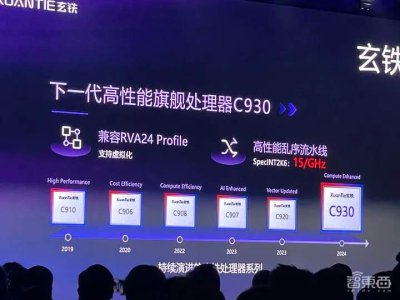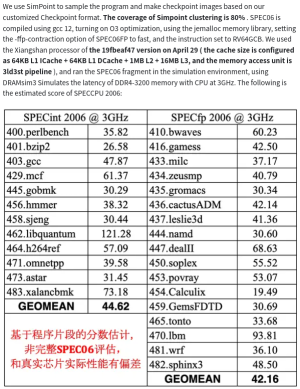- Mar 3, 2017
- 1,622
- 5,887
- 136
Some background on my experience with RISC V...
Five years ago, we were developing a CI/CD pipeline for arm64 SoC in some cloud and we add tests to execute the binaries in there as well.
We actually used some real HW instances using an ARM server chip of that era, unfortunately the vendor quickly dumped us, exited the market and leaving us with some amount of frustration.
We shifted work to Qemu which turns out to be as good as the actual chips themselves, but the emulation is buggy and slow and in the end we end up with qemu-user-static docker images which work quite well for us. We were running arm64 ubuntu cloud images of the time before moving on to docker multi arch qemu images.
Lately, we were approached by many vendors now with upcoming RISC-V chips and out of curiosity I revisited the topic above.
To my pleasant surprise, running RISC-V Qemu is smooth as butter. Emulation is fast, and images from Debian, Ubuntu, Fedora are available out of the box.
I was running ubuntu cloud images problem free. Granted it was headless but I guess with the likes of Imagination Tech offering up their IP for integration, it is only a matter of time.
What is even more interesting is that Yocto/Open Embedded already have a meta layer for RISC-V and apparently T Head already got the kernel packages and manifest for Android 10 working with RISC-V.
Very very impressive for a CPU in such a short span of time. What's more, I see active LLVM, GCC and Kernel development happening.
From latest conferences I saw this slide, I can't help but think that it looks like they are eating somebody's lunch starting from MCUs and moving to Application Processors.

And based on many developments around the world, this trend seems to be accelerating greatly.
Many high profile national and multi national (e.g. EU's EPI ) projects with RISC V are popping up left and right.
Intel is now a premium member of the consortium, with the likes of Google, Alibaba, Huawei etc..
NVDA and soon AMD seems to be doing RISC-V in their GPUs. Xilinx, Infineon, Siemens, Microchip, ST, AD, Renesas etc., already having products in the pipe or already launched.
It will be a matter of time before all these companies start replacing their proprietary Arch with something from RISC V. Tools support, compiler, debugger, OS etc., are taken care by the community.
Interesting as well is that there are lots of performant implementation of RISC V in github as well, XuanTie C910 from T Head/Alibaba, SWerV from WD, and many more.
Embedded Industry already replaced a ton of traditional MCUs with RISC V ones. AI tailored CPUs from Tenstorrent's Jim Keller also seems to be in the spotlight.
Most importantly a bunch of specs got ratified end of last year, mainly accelerated by developments around the world. Interesting times.
Five years ago, we were developing a CI/CD pipeline for arm64 SoC in some cloud and we add tests to execute the binaries in there as well.
We actually used some real HW instances using an ARM server chip of that era, unfortunately the vendor quickly dumped us, exited the market and leaving us with some amount of frustration.
We shifted work to Qemu which turns out to be as good as the actual chips themselves, but the emulation is buggy and slow and in the end we end up with qemu-user-static docker images which work quite well for us. We were running arm64 ubuntu cloud images of the time before moving on to docker multi arch qemu images.
Lately, we were approached by many vendors now with upcoming RISC-V chips and out of curiosity I revisited the topic above.
To my pleasant surprise, running RISC-V Qemu is smooth as butter. Emulation is fast, and images from Debian, Ubuntu, Fedora are available out of the box.
I was running ubuntu cloud images problem free. Granted it was headless but I guess with the likes of Imagination Tech offering up their IP for integration, it is only a matter of time.
What is even more interesting is that Yocto/Open Embedded already have a meta layer for RISC-V and apparently T Head already got the kernel packages and manifest for Android 10 working with RISC-V.
Very very impressive for a CPU in such a short span of time. What's more, I see active LLVM, GCC and Kernel development happening.
From latest conferences I saw this slide, I can't help but think that it looks like they are eating somebody's lunch starting from MCUs and moving to Application Processors.

And based on many developments around the world, this trend seems to be accelerating greatly.
Many high profile national and multi national (e.g. EU's EPI ) projects with RISC V are popping up left and right.
Intel is now a premium member of the consortium, with the likes of Google, Alibaba, Huawei etc..
NVDA and soon AMD seems to be doing RISC-V in their GPUs. Xilinx, Infineon, Siemens, Microchip, ST, AD, Renesas etc., already having products in the pipe or already launched.
It will be a matter of time before all these companies start replacing their proprietary Arch with something from RISC V. Tools support, compiler, debugger, OS etc., are taken care by the community.
Interesting as well is that there are lots of performant implementation of RISC V in github as well, XuanTie C910 from T Head/Alibaba, SWerV from WD, and many more.
Embedded Industry already replaced a ton of traditional MCUs with RISC V ones. AI tailored CPUs from Tenstorrent's Jim Keller also seems to be in the spotlight.
Most importantly a bunch of specs got ratified end of last year, mainly accelerated by developments around the world. Interesting times.






